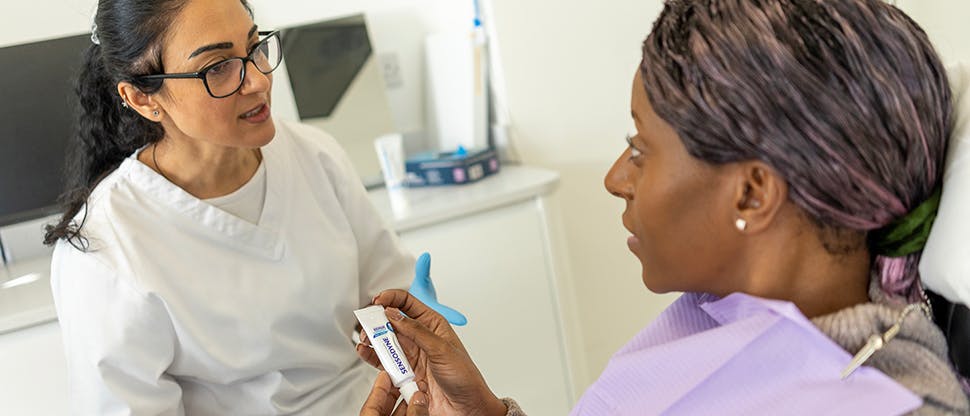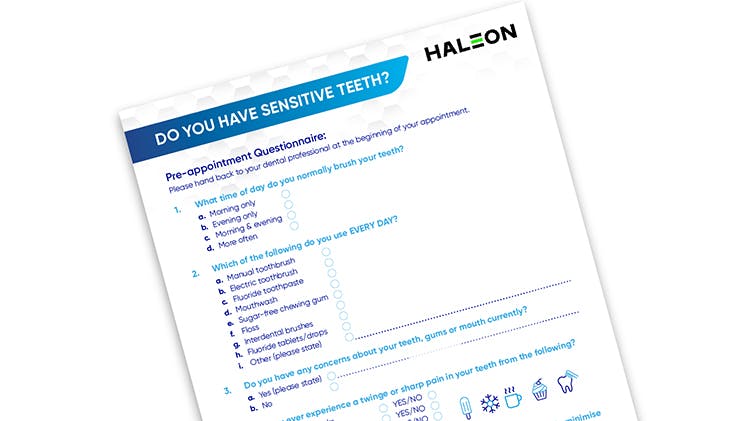Sensodyne: Recommended by dentists, used by dentists for dentine hypersensitivity

Relief from the pain of dentine hypersensitivity (DH) starts with a conversation
If you have diagnosed dentine hypersensitivity in a patient the first step in helping them is to ensure they understand the symptoms and advise them on how they can treat the condition.
70% of DH sufferers in clinical trials said the condition took the pleasure out of eating and drinking.1,2 Some patients even take radical steps to avoid the pain. Your recommendation can help!
Download our free patient questionnaire to encourage patients to consider their symptoms ahead of their appointment.
And when they do highlight symptoms or even behaviour modifications you can share a sample of Sensodyne and a recommendation.
79% of dentists with DH trust Sensodyne to care for their sensitive teeth3
As a dental professional you may be just as likely to suffer from sensitive teeth as the rest of the population.
When this occurs, our research shows that the DH toothpaste brand dental professionals turn to more than any other is Sensodyne.3
Watch the video above to learn why so many dental professionals choose Sensodyne. And recommend Sensodyne with confidence knowing it is the brand recommended and used by dentists.
To order samples to share with your patients, click the link below.
Dentine Hypersensitivity: What is it and why do dentists recommend Sensodyne?
Other ways to make a difference

Patient Sensitivity Questionnaire
Download our pre-appointment questionnaire for your patients.
Request patient samples
Request samples of Sensodyne that you can share with your patients.

Download patient resources
Find a range of resources for you to share with your patients to help explain their condition and possible treatments.

